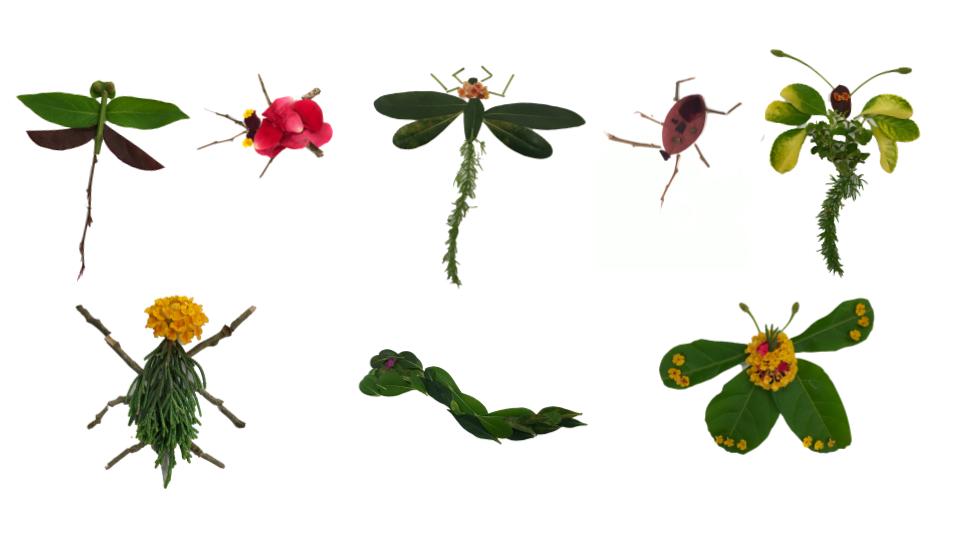This post was written by NCTE member Joan Lange, reprinted with permission from the Association of Independent School Librarians (AISL.)
In January 2023, NCTE posted a Position Statement on the Role of Nonfiction Literature (K-12), pointing out that nonfiction is “a rich and compelling genre that supports students’ development as critically, visually, and informationally literate 21st century thinkers and creators.” During NCTE’s nonfiction webinars this summer, several notable nonfiction authors expressed a concern that nonfiction works are often compartmentalized into a once-a-year topic report. Challenged to expand and deepen the use of nonfiction in our libraries, I have been incorporating nonfiction in literacy skills projects and exploring ways to encourage students to read and write more nonfiction. Here are some initial projects and future musings to enhance nonfiction reading and writing.
Launch Writing with a STEM Experiment
Patricia Newman, author of Plastic Ahoy and Planet Ocean, shared a fascinating STEM demonstration about ocean acidification at a TLA session (April 2023, Austin, Tx.). I adapted this STEM experiment to launch a writing activity with 7th grade creative writing students.

Step One: (See experiment details in “A Tale of Two Acids” by Meg Chadsey)
A purple cabbage solution was used as a base in three containers. Students added lemon juice to one container and noted the dramatic color change as this citric acid reacted with the base (cabbage solution).
Step Two:
Students watched a short clip from this Smithsonian video about the effect of carbon dioxide and ocean acidification on coral reefs. Students were asked how they could add carbon dioxide to one of the solutions to mimic the effect of carbon dioxide on oceans. Students guessed that their own breath could be added to the solution, and a student used a straw to blow into a second container of cabbage solution to see how carbon dioxide would affect a base. A color change again happened.
Step Three:
Students were shown two photos of coral reefs, one healthy and one damaged by ocean acidification.

Students read a poem by a first grader at our school. The poem described the beauty of coral reefs, the coral resembling “underwater flowers in an ocean breeze.” Using the second photo of the damaged coral reef, students created a word bank to describe the contrasting appearance of the coral. Some words included “cemetery, white bones creeping out of the ground, and brittle branches.” The word bank inspired individual poetry writing, then collaborative writing to combine their best poetic lines about the damaged coral. Poetic imagery included “a coral city turned cemetery,” “spindley winter trees,” and “what used to be rich in color, rapidly changed to ghostly white and night black.”
Read to Write: Environmental Poetry
As a follow-up writing activity, students browsed nonfiction books about a variety of environmental topics of concern, and used database articles and online news stories. After identifying an environmental topic that interested them, students cited the nonfiction source and created a Word Bank from words in the article or book; these were words that resonated with them as important.
Here is an example of one students’ planning template, and following is the poem inspired by an article about the Colorado River water crisis.
River Run Dry
Sylvie C.
A coming quarrel of a river run dry
The basin on which seven states rely
A craggy, cracked channel soon to be empty
Used to be a source of plenty
The futile fight for conservation
Is an endless conversation
Aridification of the West:
Overuse of water on human’s request
The carver of a canyon grand
Now barren bones atop the land
Putting the A in STEM
As a final art activity themed to environment and nature, this video by artist and designer Raku Inoue demonstrated creating Insect Art out of garden clippings. Using garden clippings from my home garden, students selected leaves, twigs, berries, and flowers to create their own insects. Students loved designing nature insect sculptures, and the textures, shapes, and colors of the garden clippings inspired distinctive insect “personalities.” Below is a sampling of their insect art.
Encouraging Nonfiction Reading and Writing
Each year the library and creative writing teachers co-sponsor a literary magazine, and writing contests have been a popular way to generate writing and art submissions. This year’s writing contest will be themed to the environment (in praise of our natural world and ways to be better stewards of our environment). Creative writing students will be challenged to create a promotional video for the environmental writing contest by using their colorful insect nature art. These insects will be animated in a promotional video using the Puppet Pals app.
The library will be displaying nonfiction titles themed to environmental conservationists and activists, endangered animals, environmental concerns, and national parks. Suggested reading lists for environmental books have been created in Destiny Collections so that teachers and students can browse library titles available in print and through our digital SORA collection. To highlight nonfiction book checkouts, stuffed toy birds will be “nesting” at our circulation desks, and when a student checks out a nonfiction book, they can celebrate their nonfiction book checkout by pressing the stuffed bird for an authentic bird song.
Future Plans
Here are possible ideas that will be explored further this school year:
- Recycle/Upcycle Fashion Show
Student-created designs would be paired with informational displays highlighting environmental concerns. Creative writing students have already interviewed Tina Davis, the owner of a Houston vintage clothing store, and the interview generated several creative ideas to possibly pursue. Tina Davis stressed the importance of “buying less and choosing more.” - STEAM Literacy Event
Nonfiction library books displayed with related STEAM activities. Students would facilitate STEAM demonstrations as visitors browse the display tables. - Environmental Podcast
Our creative writing students may be collaborating with our STEM teacher and her Digital Design class to create podcasts highlighting environmental concerns.
The goal of these STEM and writing activities is to spark students’ curiosity and deepen their awareness of environmental concerns through thoughtful reading of nonfiction writings. Please share the ways you enhance students’ reading of nonfiction and incorporate nonfiction in your literacy skills programming and collaborations with teachers.
 Joan Lange is Director of Libraries for the Annunciation Orthodox School. She has expertise in creating collaborative programs and services that promote love of reading and develop information literacy, encouraging students to become life-long readers and learners, as well as responsible digital citizens. Lange is a skilled presenter at local and national conferences on timely topics including Shakespeare Digital Dramatizations; Digital Citizenship and Teen Health; Teaching with Primary Sources; iBook Author; the Great Books Reading Program; Media-Rich Projects and Fair Use; and Folktale Shadow Puppetry Dramatics.
Joan Lange is Director of Libraries for the Annunciation Orthodox School. She has expertise in creating collaborative programs and services that promote love of reading and develop information literacy, encouraging students to become life-long readers and learners, as well as responsible digital citizens. Lange is a skilled presenter at local and national conferences on timely topics including Shakespeare Digital Dramatizations; Digital Citizenship and Teen Health; Teaching with Primary Sources; iBook Author; the Great Books Reading Program; Media-Rich Projects and Fair Use; and Folktale Shadow Puppetry Dramatics.
It is the policy of NCTE in all publications, including the Literacy & NCTE blog, to provide a forum for the open discussion of ideas concerning the content and the teaching of English and the language arts. Publicity accorded to any particular point of view does not imply endorsement by the Executive Committee, the Board of Directors, the staff, or the membership at large, except in announcements of policy, where such endorsement is clearly specified.

